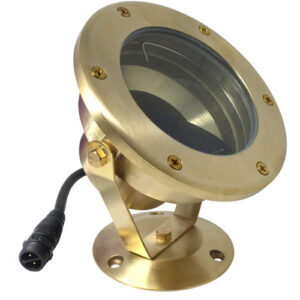Underwater Landscape Lighting
Illuminating your water feature with a white or colored light will add a nighttime dimension. The shimmering lighting effects produced by water are truly beautiful.
This pond light has a flood beam angle that’s perfect for larger environments like swimming pools, fountains, and faux waterfalls. This light is energy efficient and has a long bulb life. Visit https://orlandolandscapelighting.net/ for more information.
In general, underwater spotlights are used to highlight a specific area in a pond, fountain, pool or other water feature. They are available as LEDs and can be used in the same way as normal outdoor spotlights. Because these lights are designed to be submerged, they should be made of materials that can withstand the water. For example, stainless steel is a popular choice. You also want to look for a light that has a waterproof seal. This will prevent water from seeping into the fixture and potentially damaging the electronic components inside.
Another thing to consider when choosing an underwater light is its color temperature. Halogen lights use a colder color temperature, while LED lights are much warmer. This can make a big difference in how the light appears to the viewer. You should also pay attention to how wide the light beam is. Some lights have a narrow beam while others have a wider one.
You should also keep in mind the voltage of your lights. Most underwater lights are low voltage, which is safer for people to work with. This can be helpful for homeowners who want to install the lights themselves. It also reduces the risk of electrocuting someone if something goes wrong.
Many underwater lights come in kits that make it easier to get started. This can save you time and money, as you will not need to buy all the individual pieces separately. This type of kit can also be helpful if you are working with a limited budget.
These kits include everything you need to start your lighting project, including the lights themselves, a transformer, and a Garden and Pond Photocell with Digital Timer to manage your pond or landscape lighting automatically. This will save you both time and money, as you will not have to think about turning your lights on and off manually.
These lights are perfect for anyone who wants to illuminate their fountain or other water feature after the sun goes down. They are easy to install and backed by a limited five-year full replacement warranty. The included LED light is made of a durable material that can withstand being in the water and is built to last for years. They are also waterproof, which makes them a great option for any homeowner who has a small fountain or other water feature.
Fiber Optic Lights
Fiber optic lighting is a modern, creative and cost effective way to add beauty and ambiance to your landscape design. It can be used for signs, building outlines, cove lighting, swimming pool perimeters and underwater lighting as well as illuminating architectural fixtures. The flexible cabling also makes it easier to install and maintain than traditional systems. It also transfers no heat which means it can be used near or on display objects without the risk of deterioration from intense heat.
The light sources used with fiber optic lighting can vary in color by using colored filters and automated filtration that can change colors in any preprogrammed sequence. This allows for an almost limitless range of effects to be achieved. This type of lighting is particularly useful in museums and other areas where delicate objects are displayed.
One of the most popular applications for this type of lighting has been the Star Pool effect. This involves installing cables in the walls and bottom of a pool that emit light. This allows for the replication of constellations and other celestial themes. It is a very beautiful and unique effect that has received much attention in recent years.
Another use for this type of lighting is in fountains. It is very easy to create a galaxy rock effect with the insertion of multiple fiber optic strands into a concrete pool. This is a very dramatic and beautiful effect that is often used in commercial pools and resort pools.
This type of lighting is also very cost effective and can be easily changed out if a light bulb fails or is broken. The illuminator box, where the light bulb is located, is not in the water so it can be easily accessed and replaced.
In addition to fountains, this type of lighting can also be used in dry river beds, flagstone fillers, paver aggregates, pool decks and other outdoor surfaces. It can even be added into decorative rock arrangements and garden designs to add a colorful, modern look. This is a great way to brighten up your landscape and make it come alive at night.
Solar Lights
Lights are a key component in highlighting the beauty of your waterscape after dark. They’re also used to show off the movement of water in fountains, ponds and man-made streams and waterfalls.
There are two main types of lights that can be used in your landscape lighting: solar and wired. Solar lights use the sun to power them, which means they don’t add to your monthly utility bills. They also require less maintenance, since you don’t need to change batteries.
Wired landscape lights, on the other hand, do need a battery and a transformer to work. They’re more expensive upfront, but they offer consistent brightness and don’t dim as much on cloudy days as solar lights can. They’re also more durable, which helps them stand up to the elements.
The key to both types of lights is to find the best ones for your needs. We recommend sticking with a well-reviewed brand that has a good track record of satisfied customers in Columbia, like Unique Lighting systems.
Adding landscape lighting to your yard can help it stand out from the rest of the neighborhood after dark and create an inviting place for friends and family to gather. Whether you’re looking to light up your backyard waterscape, accent a favorite tree or highlight your front walkway, we can install the perfect fixtures to enhance your outdoor space.
Our expert team will start by creating a design plan and selecting the right lighting options for your needs. We’ll then take care of the installation and provide maintenance services as needed. To get started, contact us today! We look forward to making your outdoor spaces shine.
Line Voltage Lights
With a little planning, lighting your landscaping around your home’s pond or water feature can be a fun weekend project of moderate complexity. However, mixing water and electricity requires careful planning for the proper wiring, connections, and transformers. Incorrect connections can lead to circuit overloads and even fires. It’s best to have a professional electrician design your landscape lighting layout and bury the electrical wires correctly.
The first step in installing landscape lighting is laying out the lines that will run from the lights to the transformer and beyond. Generally, 10-gauge wire is used for the main lines and 12-gauge wire is used between the lights. The wires should be buried at least 6 in. deep if possible, to avoid damage if the lawn is aerated or if the landscape lighting system is reworked later on. It’s also a good idea to use waterproof junction boxes to make any connections between the wires, so moisture won’t cause problems down the road.
Low voltage lighting taps into the house’s 120v electrical output, but it connects that line to an exterior transformer that steps it down to a lower, cheaper to operate voltage, which can power 12v or 14v light fixtures. This makes it more difficult for children or pets to get in contact with the wires and less likely to overload the circuit feeding from the house when connected incorrectly.
They run on lower wattage bulbs than line voltage lighting and require a smaller transformer. This can help keep the installation costs down as a DIY project, but hiring a professional to wire this type of lighting is still advisable for safety reasons.
These lighting systems have thick cables that must be buried at least a foot underground and use conduits and weatherproof junction boxes. They can be more expensive than low-voltage landscape lighting, but they are perfect for commercial and public outdoor spaces that need a lot of light spread across a wide area.

